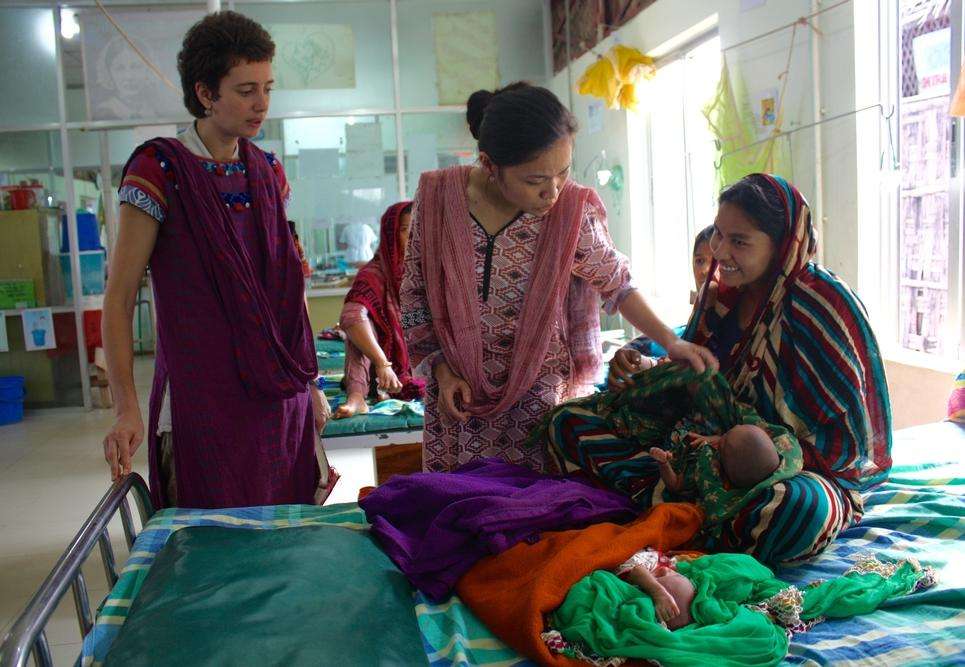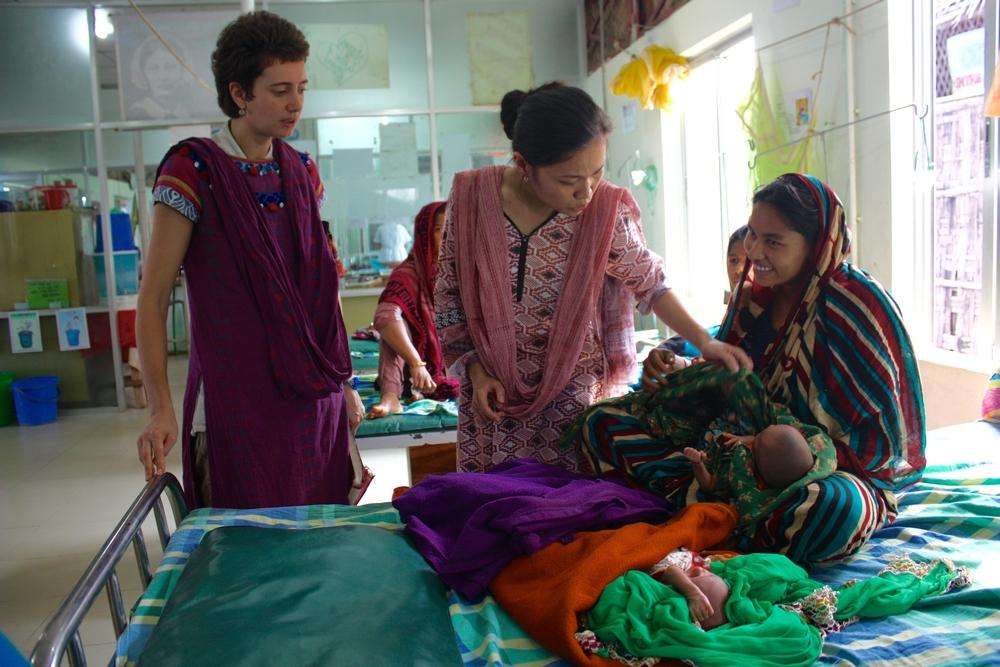Nienke de Leeuw is a midwife from Holland, currently supervising the birth unit at the MSF clinic in Kutupalong, Bangladesh.
A pregnant young woman in labor from a local village is being carried by two men into the Doctors Without Borders/Médecins Sans Frontières (MSF) health clinic in Kutupalong, Cox’s Bazaar. Her body is so swollen that she cannot walk. Our medical team immediately identify that she has pre-eclampsia – a pregnancy complication that is potentially life threatening for both mother and baby. Successful treatment requires early identification, but we have never seen this woman before at our clinic.
We refer her to the nearest hospital where, despite her physical condition, the woman musters the strength to give birth to a premature baby. But days later she returns to our clinic, with her tiny baby, and the team cares for the mother and her child in the neonatal unit. Her condition deteriorates and our team decides to refer her to the hospital in Cox’s Bazaar. We follow her progress as she is treated by the Ministry of Health staff, but sadly, less than a week after her baby is born, she dies.
Worldwide, pregnancy and childbirth place one of the biggest demands on national healthcare systems. Between 1990 and 2015 the number of women dying in childbirth worldwide fell 44 percent according to the World Health Organization (WHO).[1] In Bangladesh in the same period, that number tumbled from 569 to 176 per 100,000: a reduction of over 300 percent. This is significantly lower than most of the South Asian region, and an astonishing achievement worthy of celebration.
But childbirth only stops being a life-threatening event for mother and baby when women have access to trained medical professionals during their pregnancy. Those professionals can identify complications such as pre-eclampsia and work with women and their families to ensure appropriate medical action is taken. Experts highlight that there is still a need to improve the access to life saving emergency obstetric care, especially in rural Bangladesh[2]. My experiences in MSF’s health clinic in Kutupalong suggest this is the next priority for Bangladesh to continue its remarkable progress.
MSF’s birth unit in Kutupalong, Cox’s Bazaar, runs 24 hours a day, and offers women antenatal and postnatal care, and hosts a neonatal ward. The priority is identifying and managing complicated pregnancies and deliveries. The birth unit is just one part of a busy health clinic, which runs under the authorization of the Ministry of Health to provide quality basic emergency Obstetrics and Neonatal Care services completely free of charge.
But we still see the results of women not accessing consultations. For many, services are simply too far away and sometimes people do not seek medical assistance until there is a problem, by which time the risks are far greater.
In another case, a young pregnant woman arrived, this time from the Kutupalong makeshift camp housing Rohingya refugees. She had very high blood pressure. This was her first baby. Our midwives again identified the pre-eclampsia symptoms, but since she was much earlier in her pregnancy we prescribed her regular medication to prevent the convulsions. She felt much better and was soon able to return back to the camp. When our outreach teams went the following day to check her condition they found that she had stopped taking her medication as she didn’t have any serious symptoms. Again her blood pressure was very high and we brought her back to the birth unit to prevent any unnecessary complications.
Pre-eclampsia is one of the most common causes of maternal deaths, alongside conditions such as postpartum hemorrhage, obstructed labor, and postpartum sepsis. They need to be identified early so they can be monitored and treated to reduce maternal mortality. This can be done by ensuring access to skilled and well trained obstetric professionals over the course of pregnancy. In this way, we can stop these conditions from reaching levels that are harmful for both mother and child.
[1] World Health Organization Maternal Mortality Fact Sheet
[2] Shams El Arifeen, Kenneth Hill, Karar Zunaid Ahsan, Kanta Jamil, Quamrun Nahar, Peter Kim Streatfi eld; Lancet 2014; 384: 1366–74
Read More About MSF's Work With Women's Health





